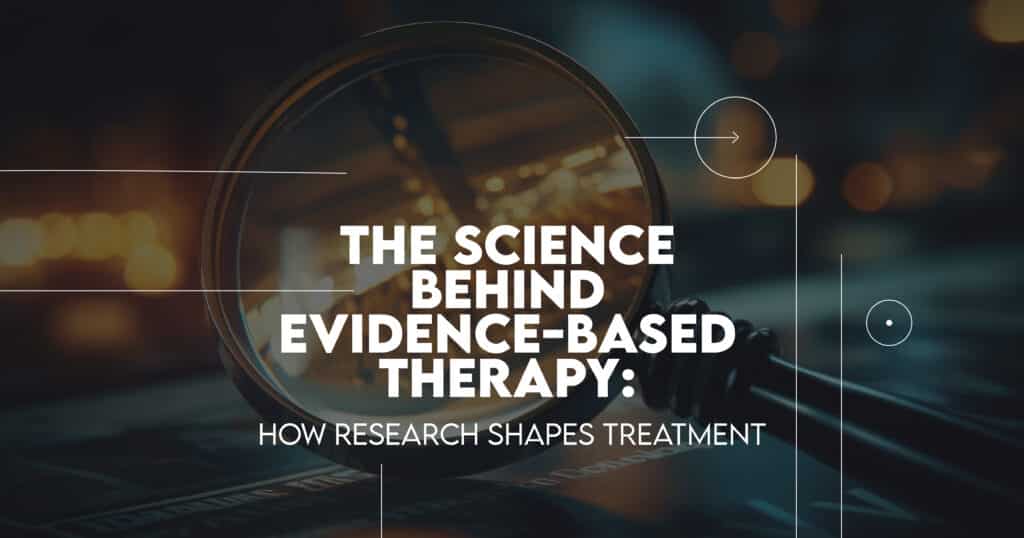Introduction
In today’s fast-paced world, mental health treatments must be effective and reliable. But how do we determine which therapies truly work? That’s where evidence-based therapy comes in. Evidence-based therapy ensures patients receive the most effective care by grounding treatment methods in rigorous research. Let’s unravel the science behind evidence-based therapy and see how research shapes treatment practices.
The Fundamentals of Evidence-Based Therapy
What is Evidence-Based Therapy?
Evidence-based therapy (EBT) refers to therapeutic practices based on scientific evidence. These therapies have been tested and proven effective through rigorous research and clinical trials. EBTs are not just theories but treatments consistently showing positive results in real-world settings.
The Importance of Evidence-Based Practices
Why is evidence-based therapy so crucial? Here are a few reasons:
– Effectiveness: EBTs are backed by research, ensuring that they work.
– Safety: They have been tested for safety, reducing the risk of harm.
– Consistency: EBTs provide consistent results across different populations and settings.
– Credibility: Using EBTs enhances the credibility of mental health professionals and the field.
How Research Shapes Treatment
The Role of Clinical Trials
Clinical trials are the gold standard for testing new therapies. They involve:
1. Recruiting Participants: Diverse groups are selected to ensure broad applicability.
2. Randomization: Participants are randomly assigned to treatment or control groups to eliminate bias.
3. Blinding: Neither participants nor researchers often know who receives the treatment, preventing preconceived notions from influencing outcomes.
4. Data Analysis: Results are meticulously analyzed to determine the therapy’s effectiveness.
Meta-Analyses and Systematic Reviews
These are comprehensive studies that compile data from multiple clinical trials. They offer a broader perspective on a therapy’s effectiveness by:
– Combining results from various studies to provide a more robust conclusion.
– Identifying patterns, strengths, and weaknesses in the research.
– Guiding future research directions and clinical practices.
Key Evidence-Based Therapies
Cognitive Behavioral Therapy (CBT)
CBT is one of the most well-researched and compelling forms of therapy. It focuses on changing negative thought patterns and behaviors. Key components include:
– Cognitive Restructuring: Identifying and challenging distorted thoughts.
– Behavioral Activation: Encouraging engagement in positive activities.
– Exposure Therapy: Gradually facing fears in a controlled manner.
Dialectical Behavior Therapy (DBT)
Initially developed for borderline personality disorder, DBT combines CBT techniques with mindfulness practices. It includes:
– Emotion Regulation: Learning to manage intense emotions.
– Distress Tolerance: Developing skills to cope with crises.
– Interpersonal Effectiveness: Improving communication and relationship skills.
– Mindfulness: Focusing on the present moment to reduce anxiety and stress.
Eye Movement Desensitization and Reprocessing (EMDR)
EMDR is a therapy used primarily to treat trauma. It involves:
– Bilateral Stimulation: Engaging the brain through eye movements or other stimuli.
– Processing Traumatic Memories: Helping patients reprocess and integrate traumatic memories.
– Reducing Distress: Alleviating the emotional impact of traumatic experiences.
The Integration of Research in Clinical Practice
Training and Education
For evidence-based therapy to be effective, therapists need proper training. This includes:
– Formal Education: Graduate programs that emphasize evidence-based practices.
– Continuing Education: Ongoing training to stay updated on the latest research.
– Supervision: Mentorship from experienced clinicians to ensure proper application of EBTs.
Treatment Planning
Evidence-based therapy isn’t a one-size-fits-all solution. Treatment plans must be tailored to the individual. This involves:
– Assessment: Thorough evaluation of the patient’s needs and symptoms.
– Goal Setting: Collaborating with the patient to set realistic and meaningful goals.
– Flexibility: Adapting the therapy based on the patient’s progress and feedback.
Monitoring and Evaluation
Continuous monitoring ensures that the therapy remains effective. This includes:
– Regular Check-Ins: Frequent sessions to assess progress.
– Outcome Measures: Using standardized tools to evaluate improvements.
– Adjustments: Modify the treatment plan to better meet the patient’s needs.
The Future of Evidence-Based Therapy
Advances in Technology
Technology is revolutionizing evidence-based therapy. Innovations include:
– Teletherapy: Providing access to therapy through video calls, making it more accessible.
– Apps and Digital Tools: Offering supplementary support through mental health apps.
– Virtual Reality: Using VR to create immersive exposure therapy experiences.
Personalized Medicine
The future of evidence-based therapy may involve more personalized approaches. This could include:
– Genetic Testing: Understanding how genetics influence therapy responses.
– Tailored Interventions: Creating customized treatment plans based on individual characteristics.
Ongoing Research
Continuous research is essential to advancing evidence-based therapy. This involves:
– Exploring New Therapies: Investigating novel treatments and their efficacy.
– Improving Existing Therapies: Refining and enhancing current evidence-based practices.
– Cross-Disciplinary Collaboration: Integrating diverse insights and techniques with other fields.
FAQs
What makes a therapy “evidence-based”?
A therapy is considered evidence-based when it has been rigorously tested through scientific research and has consistently shown to be effective.
How do therapists choose which evidence-based therapy to use?
Therapists choose therapies based on the specific needs and conditions of the patient, supported by the best available research.
Can evidence-based therapy help with all mental health conditions?
While EBTs are effective for many conditions, they may only suit some. It is vital to work with a therapist to find the best approach for your situation.
How long does it take to see results from evidence-based therapy?
The timeline varies depending on the individual and the condition being treated. Some people may see improvements in a few weeks, while others may take longer.
Does insurance cover evidence-based therapy?
Many insurance plans cover evidence-based therapies, but coverage can vary. It’s best to check with your provider to understand your benefits.
Wrapping Up
The science behind evidence-based therapy is a testament to the power of research in shaping effective treatment. We ensure patients receive the best care possible by grounding therapeutic practices in rigorous research. As technology and personalized medicine continue to evolve, the future of evidence-based therapy looks promising, offering hope and healing to countless individuals.





